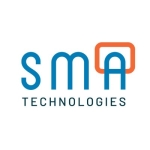What is our primary use case?
We use it to automate searches in public databases. We have lawyers who need to search for various companies. For example, we are searching insolvency files for a list of business partners, so we use the robot to perform the search and notify clients about its results. Thus, it helps us with our work in searching public registries.
We have the Studio license and attended robots.
How has it helped my organization?
It enables us to provide new services, e.g., our use case is something that we could not have delivered manually. Now that we use the robot, it is something that we can offer to clients. Therefore, it has helped us expand our scope of services and offer to clients more competitive fees. We are now trying to get more clients.
If we were to do this manually, it would take us one day for 200 companies. Now, it takes about half an hour. So, it has reduced our time to process information. Before, we didn't offer these services on a mass scale. We just often did it for a couple of companies. Now, we can offer it on a larger scale.
One of the departments in our organization does use UiPath for compliance purposes: To send reminders to our clients. We have to ensure that clients are compliant when they submit financial statements. We use the robot to send them reminders to update the steps of compliance, i.e., if it's done. This is not my team, but another team who uses it for compliance purposes. It has increased their level of compliance because it's timely and there are no errors in the reminders.
What is most valuable?
We mostly value the fact that it easily interacts with existing systems. We don't have to go to a complex interface to access public information to send the emails, etc. This is the good part.
Its ease of management is okay. Our attended robots have some Excel files that we use to manage and configure the robots. It is quite straightforward.
It has helped relieve the legal staff of the burdensome task of searching on the public registry. For them, this has been a big improvement. It saves time and also the risk of human error has been reduced, because now the robot does the work. So, you don't get bored when you check 2,000 companies on the portal. The staff is overall more satisfied because they can do more value-added tasks than performing this search.
What needs improvement?
The pricing for Orchestrator and unattended robots could use improvement. If we plan to roll out and implement more robots, then perhaps lower costs on Orchestrator and unattended robots would make adoption even easier.
Buyer's Guide
UiPath Platform
October 2025
Learn what your peers think about UiPath Platform. Get advice and tips from experienced pros sharing their opinions. Updated: October 2025.
873,003 professionals have used our research since 2012.
For how long have I used the solution?
For roughly a year and a half.
What do I think about the stability of the solution?
So far, the stability has been good. We haven't had any issues.
What do I think about the scalability of the solution?
If you have an attended robot, then it is scalable to a certain extent, but this is because of the price tag. If you think through your use cases, then you can use the same license for multiple purposes. If we think of scalability in the sense of changing the process, then this is something that can be done, but it requires extra development time. So, it's rather scalable.
We have two lawyers using this robot. Their role is to monitor the robot and make sure that the robot works fine. For example, if there are any complaints from the clients, then they can respond.
We, in legal, are among the first to use this robot to my knowledge. Other than a couple of robots that I've mentioned in this review, I'm not aware of other robots.
How are customer service and support?
The technical support is very good. They were very responsive. We had a question about the license and they replied very quickly.
Which solution did I use previously and why did I switch?
We did not previously use another solution. We decided to implement an RPA solution because we wanted to streamline our processes. We also wanted to be able to offer and develop new services for our clients. For these particular use cases, using other technology solutions would have been more expensive and complicated to set up.
How was the initial setup?
The initial setup was a bit complex. We are a very big company with a lot of IT centers. I think the complexity was on our side. The initial part of setting up the virtual machine and installing the licenses took roughly two months. After that, the development time was very short: one week.
Our experience, as administrators of the platform, is quite good. Once the robot is set up, it is very easy to see the results, reports, and if there are any errors. It is quite easy to use.
The robot that searches for insolvency cases was built in one week. After that, we have been testing it and making adjustments, but the construction and development time were very short.
It speeds up digital transformation because it's easy to implement and have it live. Therefore, it is something that we can use very easily to streamline our operations.
What about the implementation team?
I handled the project and managed the discussion with our IT. We had several infrastructure teams who set up the virtual machines and helped us install the licensing. We had a third-party developer who developed the robot. We also had an internal team who tested the implementation. I oversaw everything.
We were happy with the third-party developer.
Now, there are several providers/developers who can build UiPath robots quite easily and at affordable prices. So, in our case, it was quite a straightforward process of building the robot.
What was our ROI?
Our processing time was reduced to half an hour. Something that would have taken up the whole day (eight hours) was reduced to half an hour. This has freed up our legal staff’s time to focus on more important and strategic tasks.
What we have managed to do is to offer a completely new service. It is something that we did not offer on a regular basis or big scale. Using RPA, we can offer it to a larger scale with the reduced costs.
What's my experience with pricing, setup cost, and licensing?
The pricing is okay, but I recommend to build a business case before going live. Ensure that you really use the license and building the robot makes sense. Try to think of multiple use cases, because one license can be used for several robots.
There are additional costs for using third-parties. We also have internal costs with the infrastructure and for the virtual machines where the robot operates.
The costs are quite affordable. It is a solution that makes sense from a business perspective.
Which other solutions did I evaluate?
We didn't do a very formal business review process.
What other advice do I have?
I think the platform is very good.
Have a good consultant advise you on the processes of automations: How to build the use case and business case. You will need a bit of knowledge around RPA and business processes to be able to have a successful implementation.
Have a stronger technical partner tool to help with developing the robot, making adjustments, testing, etc. Testing is very important. It is important that you allocate resources for testing.
Robots can do things in a different manner than we can and more efficiently. We have to be creative and think of processes, even if only part of them are repetitive, that we can automate and a human can work with the robot. Then, the overall the process is improved and our experience as humans is a lot better.
I would this solution a 10 out of 10 because they are very good at what they do. It's very important that you understand what the solution can do and its limitations. However, for this type of product, I think they are the best.
Which deployment model are you using for this solution?
On-premises
Disclosure: PeerSpot contacted the reviewer to collect the review and to validate authenticity. The reviewer was referred by the vendor, but the review is not subject to editing or approval by the vendor.


















5-Star RPA Platform - UiPath 2020.4